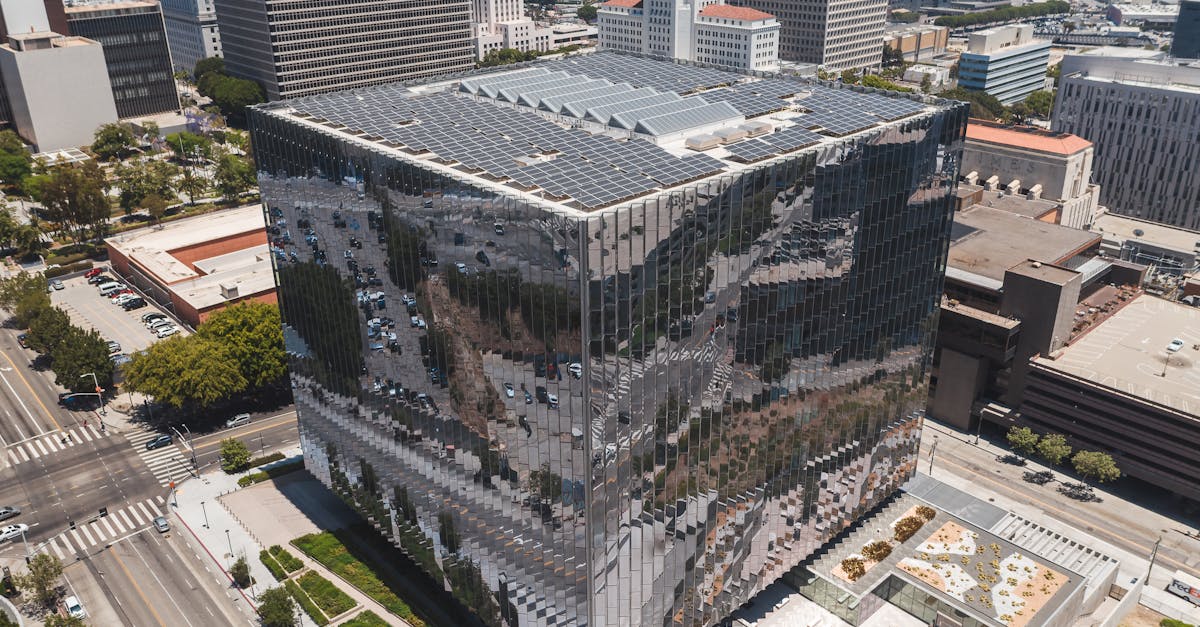
10 benefits of installing solar panels in the North West
Low Maintenance Requirements
Solar panels are designed with durability in mind, which means they require very little upkeep once installed. Most systems only need a periodic inspection to ensure that they are functioning efficiently. Dirt, debris, and leaves might accumulate on the surface, but a simple rinse with water is usually enough to keep them operating at peak performance.
This low maintenance aspect not only saves time but also reduces long-term costs associated with energy production. With no moving parts, the risk of wear and tear is minimal, allowing homeowners to enjoy the benefits of renewable energy without the hassle of extensive repairs or regular servicing. Many panels come with warranties that last for decades, further ensuring peace of mind for those who invest in solar technology.
Durable and LongLasting Systems
Solar panels are engineered to withstand various environmental conditions, ensuring they can serve homeowners effectively over long periods. Most systems come with warranties that guarantee performance for 25 years or more, offering peace of mind about their longevity. Advances in materials and manufacturing processes have led to the development of panels that are resistant to harsh weather conditions such as hail, heavy rain, and extreme temperatures.
The resilience of these systems translates into a minimal likelihood of needing repairs or replacements shortly after installation. This durability not only reduces the overall cost of ownership but also contributes to a more sustainable investment. With proper care and occasional cleaning, solar panels can maintain high levels of efficiency throughout their lifespan, further solidifying their role as a long-term energy solution.
Job Creation
The installation of solar panels contributes significantly to job creation within the North West region. A growing demand for renewable energy sources leads to increased employment opportunities in various sectors, including manufacturing, installation, and maintenance of solar systems. Local businesses often expand their workforce to accommodate the rising need for trained technicians and engineers, resulting in a more robust job market.
Moreover, solar energy initiatives often stimulate ancillary industries. Supply chains encompassing component manufacturing, logistics, and recycling services require additional personnel as solar adoption rises. This network effect encourages community development and resilience, fostering an environment where local economies can thrive alongside renewable energy advancements.
Boosting Local Employment Opportunities
The installation of solar panels leads to a significant uptick in local job creation. Various roles emerge along the supply chain, from manufacturing and installation to maintenance and sales. As demand for renewable energy solutions grows, so does the need for skilled workers in these sectors. This shift not only offers employment opportunities but also encourages communities to develop new training programs tailored to the solar industry.
Moreover, local businesses benefit from the increase in demand for solar panel systems. Local contractors, electricians, and even support services see growth as more households and firms choose to harness solar energy. Investing in renewable energy fosters a more robust local economy, stimulating related industries and encouraging entrepreneurial ventures in the green technology space. Enhanced local employment opportunities help to create a sustainable employment model for future generations.
Technological Advancements
The solar energy sector has witnessed remarkable developments in technology over recent years. Innovations such as bifacial solar panels capture sunlight from both sides, increasing overall energy generation. Additionally, advancements in inverter technology have improved the efficiency of converting solar energy into usable electricity, making systems more effective and economical for homeowners.
These technological improvements not only enhance energy output but also contribute to the longevity and reliability of solar panel systems. New materials have emerged that are more resistant to environmental factors like hail and heavy rain. This evolution in technology positions solar energy as a robust and sustainable power source for the future, further encouraging installations in various regions, including the North West.
Increased Efficiency of Solar Panels
The advancement of solar technology has led to significant improvements in the efficiency of solar panels. Modern systems utilise higher-quality materials and innovative designs, allowing them to convert sunlight into electricity at a much greater rate than earlier models. Many new installations are capable of reaching efficiencies above 20%, which means more energy generation from the same amount of sunlight.
These enhancements not only maximise the energy output for homeowners but also reduce the overall payback period for the investment. As solar panel manufacturers continue to focus on research and development, the future promises even more efficient systems, providing an increasingly viable option for those considering renewable energy solutions. More energy captured translates to lower electricity bills and a reduced carbon footprint, making solar panels an attractive choice for environmentally conscious consumers.
FAQS
What are the main benefits of installing solar panels in the North West?
The main benefits include low maintenance requirements, durability and longevity of systems, job creation, increased local employment opportunities, and advancements in technology leading to higher efficiency of solar panels.
How much maintenance do solar panels require?
Solar panels typically require minimal maintenance, mainly involving periodic cleaning and an annual inspection to ensure optimal performance.
Are solar panels durable?
Yes, solar panels are designed to be durable and can last for 25 years or more, often backed by warranties that guarantee performance over time.
How do solar panels contribute to job creation?
The installation of solar panels stimulates local economies by creating jobs in manufacturing, installation, and maintenance, which helps to support community employment.
What technological advancements have improved solar panel efficiency?
Recent advancements include the development of more efficient photovoltaic materials, improved inverter technology, and better system designs that maximise sunlight capture and conversion.
Related Links
Review of the top solar panel installation companies in the North WestThe history of solar panel technology in the UK
Roundup of the best solar panel financing options in the North West
Why is a site assessment crucial before installation
What permits are needed for solar panel installation